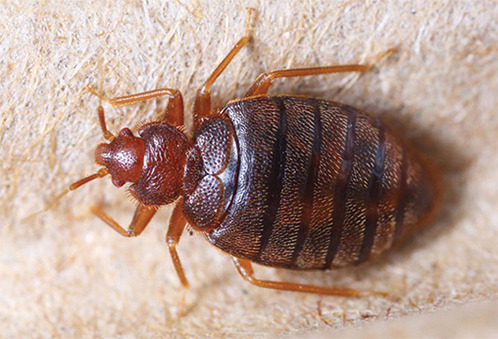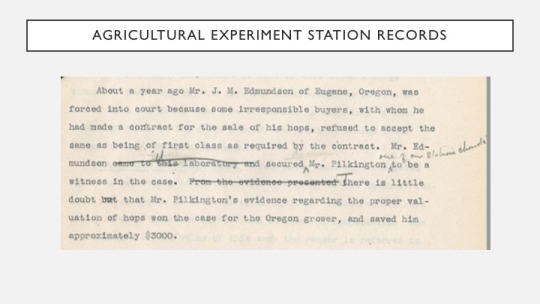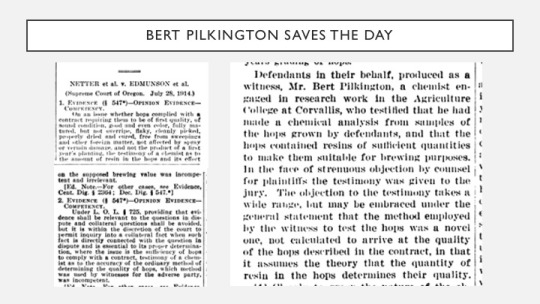#Pest control east york
Explore tagged Tumblr posts
Text
East York Pest Control
Phone: (647) 243-8195
Address: 455 Danforth Ave suite # 101, Toronto, ON M4K 1P1
Website: https://eastyorkpestcontrol.ca
East york pest control services provides 100% guaranteed pest removal for all common pests including cockroaches, mice, bed bugs, and ear wigs. We take great pride in getting rid of pests in your home so you can get back to your life and live in comfort. We are the most reliable pest control service in Toronto and take great care with every one of our customers. For your queries - "pest control near me", "pest control East York", "bed bug removal near me", "animal removal East York", "mice removal near me", "Exterminators east york", "Exterminators near me", "wasp exterminators near me", "Animal control 24 hours", "rodent removal". Give us a call at 647-243-6270 any time for a free consultation and quote!




#Pest control east york ontario#Pest control east york#Pest control near me#Eat york pest control#Exterminators east york#Pest control in east york#Rat removal east york#Mice removal east york#Pest Control Toronto#Pest control danforth#Bedbugs removal#Insect control#Raccoon removal east york#Squirrel removal east york#Cockroaches removal east york#Ants removal east york
1 note
·
View note
Text

Proper storage and sanitation play a crucial role in pest control. Pests, such as insects, rodents, and bacteria, can pose a serious threat to public health and safety by contaminating food and spreading diseases.
0 notes
Text
Pest Control Services in East Gwillimbury: Your Solution for a Pest-Free Home
East Gwillimbury, a growing community in York Region, Ontario, is known for its picturesque landscapes, parks, and family-friendly atmosphere. However, like many suburban areas, it is not immune to pest issues that can affect the comfort and safety of its residents. Professional pest control services are essential for maintaining a healthy living environment, ensuring that homes and businesses remain free from unwanted invaders.

Common Pests in East Gwillimbury
Ants: Various species, including carpenter ants and sugar ants, are frequently encountered, often seeking food and shelter in homes.
Rodents: Mice and rats can invade homes, particularly during colder months, leading to potential health hazards and property damage.
Termites: These destructive insects pose a significant risk to wooden structures, making early detection and treatment vital for homeowners.
Bed Bugs: A growing concern, bed bugs can quickly infest living spaces, causing discomfort and requiring professional extermination.
Cockroaches: Resilient and notorious for their ability to thrive in various environments, cockroaches can contaminate food and spread diseases.
Wasps and Bees: While important for pollination, these insects can become a nuisance and pose risks if they build nests too close to human activity.
Why Choose a Professional Pest Control Company?
Expertise: Professional pest control technicians possess the training and knowledge necessary to identify pest species, understand their behaviors, and implement effective treatment plans.
Customized Solutions: Every pest problem is unique. Professionals can assess your specific situation and create tailored strategies to address the infestation.
Safety First: The application of pesticides can be hazardous if not handled correctly. Professional services prioritize safety, using appropriate methods and protective equipment.
Long-Term Prevention: Beyond immediate extermination, pest control company east Gwillimbury focus on long-term prevention strategies to help ensure that properties remain pest-free.
Effective Pest Control Techniques
Thorough Inspections: A comprehensive inspection of the property helps identify signs of infestation, entry points, and potential nesting sites.
Targeted Treatments: Depending on the pest type, various treatment options may be employed, including baits, traps, sprays, and eco-friendly alternatives.
Exclusion Measures: Sealing entry points and eliminating attractants (like food waste and standing water) are crucial steps in preventing future infestations.
Ongoing Monitoring: Regular follow-up inspections help ensure that pest issues are effectively managed and assist in preventing new infestations from occurring.
Choosing the Right Pest Control Company in East Gwillimbury
When searching for a pest control service, consider the following factors:
Licensing and Insurance: Ensure the company is licensed to operate in Ontario and carries the necessary insurance for added protection.
Reputation: Look for customer reviews and testimonials to assess the reliability and effectiveness of the service.
Experience: Choose a company with a solid track record in handling specific pest issues relevant to East Gwillimbury.
Eco-Friendly Options: If sustainability is a priority, inquire about the availability of environmentally friendly pest control methods.
Conclusion
Effective pest control is essential for maintaining a safe and comfortable environment in East Gwillimbury. By partnering with professional pest control services, homeowners and businesses can effectively address existing infestations and implement preventive measures to keep their properties safe. Regular inspections and tailored solutions provide peace of mind, allowing residents to enjoy the beauty and tranquility of their community without the worry of unwanted pests. In East Gwillimbury, expert pest control services are dedicated to helping you protect your home and enhance your quality of life.
0 notes
Text
First came the spotted lanternflies, then the cicadas — and now, the spiders? The Northeast U.S. is bracing for an invasion of giant venomous spiders with 4-inch-long legs that can parachute through the air.
Earlier this year, New Jersey Pest Control warned of the incoming spiders, saying Joro spiders will be "hard to miss" as females have a leg span of up to 4 inches and are known for their vibrant yellow and grey bodies.
"What sets them apart, however, is their ability to fly, a trait uncommon among spiders," the company said. "While not accurate flight in the avian sense, Joro spiders utilize a technique known as ballooning, where they release silk threads into the air, allowing them to be carried by the wind."

1 note
·
View note
Text
10 Things That Could Happen If You Neglect Internal Waterproofing Your Basement
Your home's basement often serves as a valuable space for storage, recreational activities, or even as an extra living area. However, without proper protection, it can be vulnerable to water infiltration, which can lead to severe consequences.

Costly Consequences Of Neglecting Internal Waterproofing For Your Basement
1. Mold and Mildew Growth
One of the most common consequences of a damp or wet basement is the growth of mold and mildew. These microorganisms thrive in moisture-rich environments and can spread rapidly throughout your basement. Mold and mildew not only cause a musty odor but also pose serious health risks to your family, including allergies, respiratory issues, and skin irritations.
2. Structural Damage
Prolonged exposure to moisture can lead to severe structural damage to your home's foundation and basement walls. Water infiltration can weaken the structural integrity of the foundation, causing cracks and even potential collapse in extreme cases. Repairing such damage can be expensive and disruptive to your home.
3. Decreased Property Value
Experts at Act Fast Waterproofing explains how a wet or damp basement can significantly decrease the value of your property. Prospective buyers are often deterred by homes with basement water issues, which can lead to difficulty selling your home and potentially result in lower offers. Internal waterproofing helps protect your investment by preserving your property's value.
4. Pest Infestations
Damp basements are inviting environments for pests like termites, ants, and rodents. These unwanted guests can cause extensive damage to your home and require costly pest control measures to eliminate. By addressing moisture issues through internal waterproofing, you can prevent these infestations.
5. Unusable Space
A wet or damp basement is essentially unusable, limiting your home's functionality and potentially forcing you to forgo valuable living or storage space. Internal waterproofing allows you to reclaim your basement, turning it into a functional, dry, and safe area for various purposes.
6. Higher Energy Bills
Basement moisture can lead to higher energy bills as your HVAC system works harder to compensate for the increased humidity. Maintaining a dry basement through internal waterproofing can improve energy efficiency and reduce your monthly utility costs.
7. Risk of Electrical Hazards
Water infiltration in the basement can pose electrical hazards, especially if there are electrical components or appliances in the affected area. Water and electricity are a dangerous combination, and neglecting waterproofing measures can result in electrical fires and costly repairs.
8. Compromised Indoor Air Quality
A damp basement can contribute to poor indoor air quality throughout your home. As mold and mildew thrive, they release airborne spores that can travel throughout your living spaces, leading to respiratory problems, allergies, and other health issues for your family.
9. Costly Repairs
Ignoring basement moisture issues can lead to costly repairs down the line. Fixing structural damage, eliminating mold, and addressing electrical hazards can add up to significant expenses that could have been prevented with timely internal waterproofing in East York.

10. Frustration and Stress
Dealing with a wet basement can be a source of constant frustration and stress. It's an ongoing problem that affects your daily life and peace of mind. Investing in internal waterproofing offers a long-term solution and eliminates the stress associated with recurring basement issues.
The consequences of neglecting internal waterproofing for your basement are far-reaching and costly. From structural damage and health hazards to reduced property value and legal liabilities, the risks associated with a damp and water-prone basement are substantial. Investing in professional internal waterproofing is not only a sound financial decision but also a means to protect your family's health, safety, and overall well-being. Don't wait until the consequences become overwhelming; take proactive steps to ensure your basement remains dry, secure, and comfortable. Visit this page to learn more.
0 notes
Text
Pest Control in Ajax

Pest Control in Ajax: https://qualityPestControlgta.ca/Pest-Control-ajax/Our pest control in East York takes pride in having the necessary experience and knowledge to keep its customers happy. We are proud of our work, but even more so of the fantastic achievements we have attained over the years. Having such a large number of satisfied clients can only mean that the work was done not well, but flawlessly. One of the key reasons for our company’s excellent evaluations and reputation, as well as its ability to keep its market-leading position, is its ability to provide customized solutions, based on the situation at hand. Furthermore, our professionals offering pest control in East York are always integrating new and innovative methods to perform their tasks in the most efficient manner possible.
0 notes
Photo


10-2019 © Peter Arkle
#Peter Arkle News#Peter Arkle#illustration#animation#exterminator#pest control#poison#unhealthy#East Village NYC#New York people
6 notes
·
View notes
Text
Study confirms superior sound of a Stradivari is due to the varnish

Enlarge /
A 1729 Stradivari known as the "Solomon, Ex-Lambert" on display at Christie's in New York in March 2007.
Along with Andrea Amati and Andrea Guarneri, Antonio Stradivari dominated the so-called Golden Age of Violins (roughly 1660 to 1750), and the instruments they crafted remain the gold standard today in terms of acoustic quality. World-renowned cellist Yo-Yo Ma has long favored a Stradivarius instrument, as does violinist Joshua Bell. But scientists have been arguing for years about precisely why these instruments have such superior sound. A recent paper published in the journal Angewandte Chemie confirms a theory dating back to 2006: the secret lies in the chemicals used to soak the wood, most notably borax, zinc, copper, alum, and lime water.
I've written extensively about this topic in the past. The (perceived) unique sound can't just be due to the instrument's geometry, although Stradivari's geometrical approach did give us the violin's signature shape. One hypothesis is that Stradivari may have used Alpine spruce that grew during a period of uncommonly cold weather, which caused the annual growth rings to be closer together, making the wood abnormally dense. Another prevailing theory has to do with the varnish: namely, that Stradivari used an ingenious cocktail of honey, egg whites, and gum arabic from sub-Saharan trees—or perhaps salts or other chemicals.
Then again, the difference may be all in our heads. A player's instrument preference is highly subjective, and there's some evidence of so-called "psychoacoustics" at play: that is, we've become so awed by the name Stradivarius that it influences how we evaluate or respond to the sound of one of Stradivari's instruments.
In fact, a 2012 double-blind study of 21 experienced violinists found that most of the subjects preferred playing the newer instruments; the Stradivarius ranked last in their preferences. Most of them couldn't tell the difference between the old and new instruments, with no significant correlation between an instrument's age and its monetary value. "Rather than searching for the 'secret' of Stradivari, future research might best be focused on how violinists evaluate instruments, on which specific playing qualities are most important to them, and on how these qualities relate to measurable attributes of the instruments, whether old or new," the authors concluded.
The varnish theory dates back to 2006, when Joseph Nagyvary, a professor emeritus of biochemistry at Texas A&M University, made headlines with a paper in Nature claiming that it was the chemicals used to treat the wood—not necessarily the wood itself—that was responsible for the unique sound of a Stradivarius violin. Specifically, it was salts of copper, iron, and chromium, all of which are excellent wood preservers but may also have altered the instruments' acoustical properties. He based his findings on studies using infrared and nuclear magnetic resonance spectroscopy to study the chemical properties of the backboards of several violins (the backboard is the instrument's largest resonant component).

Enlarge /
Close-up of the sculpture of Antonio Stradivari (1644–1737) in Corso Garibaldi, Cremona, Italy.
Elena Piccini/Fototeca Gilardi/Getty Images
In 2007, physicist George Bissinger of East Carolina University used a 3D scanning laser to produce detailed and quantitative measurements of the acoustic properties of several Strad violins—essentially mapping out how they vibrate to produce those heavenly tones. Bissinger hung each of the five violins by elastic bands, then struck the wood of the top plate with a little hammer while recording and measuring the vibrational modes with the scanner.
He specifically wanted to measure the in-plane and out-plane motion: the in-plane motion is the source of much of the sound energy, and this converts into out-plane motion, which produces the rich tonal sounds we associate with fine violins. In addition, he hired a world-class violinist to play each of the violins used in the study for an hour to get the feel of the instruments and then offer subjective ratings for each one. The musician's subjective analysis was then compared to the objective acoustical data. The resulting measurements were sufficiently detailed to reconstruct the stiffness properties of the wood used to make the Strads, according to Bissinger.
CT scans
In 2008, Berend Stoel from the Leiden University Medical Center in the Netherlands collaborated with a luthier named Terry Borman to take CT scans of several Strads, along with several modern instruments for comparison. The aim was to study the density of the woods used, since differentials in wood density impact vibrational efficiency and thereby the production of sound. Stoel had developed a computer program that noninvasively calculated lung densities in people suffering from emphysema, and he adapted it to study wood densities from CT scans.
There wasn't much significant difference between the average wood density of the classical and modern violins used in the study. But the density differences between wood grains of early and late-growth wood was significantly smaller in the classical Cremonese violins compared with modern violins. "Our results clearly document basic material property differences between the woods used by the classical Cremonese and contemporary makers," the authors concluded.
More evidence in favor of Team Varnish came from a 2016 study by researchers at the Swiss Federal Laboratories for Materials Science and Technology (EMPA). They studied how a varnish's chemical composition, thickness, and degree of penetration into the wood affected the acoustics of the instrument.
As I wrote for Gizmodo in 2016:
They used samples of Norway spruce tone wood cut from the same tree and coated the samples with different kinds of varnish: two of their own making, and two used by German master violin makers. Then they conducted vibration tests of the samples over time, using x-ray tomography to measure the effects.
The researchers found that all the varnishes increased the wood's dampening ability—that is, how well it absorbs and stops vibrations. That extra damping, compared to unvarnished wood, leads to a warmer, mellower, and aesthetically pleasing sound. The varnishes favored by German luthiers performed slightly better in that regard, and also made for better sound radiation (louder tones).
A 2017 study by Taiwanese researchers compared the maple used by Stradivarius with modern, high-quality maple wood. Their analysis showed evidence of chemical treatments in the form of aluminum, calcium, and copper, among other elements. And thanks to the decomposition over time of a wood component called hemicellulose, the Stradivari and Guarneri instruments used in the study had 25 percent less water than modern instruments. "This is fundamentally important because the less moisture, the more brilliant the sound," Nagyvary told The New York Times.

Enlarge /
Violinist Adrian Pintea plays a 1729 Stradivari known as the "Solomon, Ex-Lambert" in 2007 at Christie's in New York.
Don Emmert/AFP/Getty Images
This latest study analyzes trace chemicals preserved in the maple wood used to make the soundboards of Stradivari and Guarneri instruments. The research involved a rare collection of Cremonese wood samples of spruce and maple used by Stradivari, Guarneri, and Amati, and the results were then compared to modern spruce and maple tonewoods, as well as woods from antique Chinese zithers and less exceptional old European violins.
They found traces of borax and several metal sulfates in the wood samples dating between 1600 to 1750. As David Bressan explained over at Forbes:
Borax, also known as sodium-borate, occurs naturally in evaporite deposits produced by the repeated evaporation of seasonal lakes. Borax is still used today in various household laundry and cleaning products, and in the past was used also as an insecticide and fungicide, killing pests. Copper and zinc sulfates, often associated with copper ore, likely served the same purpose. Alum, an evaporite mineral containing sulfur, aluminum, potassium and sodium, was added to the mix to form a weak acidic environment in the wood, preventing mold growth. Halite, common table salt, was added as moisture control, keeping the wood too dry for microbes and fungi, and at the same time preventing the deformation of the instrument caused by humidity fluctuations.
This is welcome news to Nagyvary, who co-authored this latest paper. "This new study reveals that Stradivari and Guarneri had their own individual proprietary method of wood processing, to which they could have attributed a considerable significance," he told Texas A&M Today. "They could have come to realize that the special salts they used for impregnation of the wood also imparted to it some beneficial mechanical strength and acoustical advantages. These methods were kept secret. There were no patents in those times. How the wood was manipulated with chemicals was impossible to guess by the visual inspection of the finished product."
Nagyvary still thinks more research is needed to shed further light on the connection between the chemicals used to treat the wood and the sound quality of the finished instruments. "First, one needs several dozens of samples from not only Stradivari and Guarneri, but also from other makers of the Golden Period (1660-1750) of Cremona, Italy," he said. "There will have to be better cooperation between the master restorers of antique musical instruments, the best makers of our time, and the scientists who are performing the experiments often pro bono in their free time."
DOI: Angewandte Chemie, 2021. 10.1002/anie.202105252 (About DOIs).
via:Ars Technica, September 16, 2021 at 07:00PM
2 notes
·
View notes
Text

Norma Marie Talmadge (May 2, 1894 – December 24, 1957) was an American actress and film producer of the silent era. A major box-office draw for more than a decade, her career reached a peak in the early 1920s, when she ranked among the most popular idols of the American screen.
A specialist in melodrama, her most famous film was Smilin’ Through (1922), but she also scored artistic triumphs teamed with director Frank Borzage in Secrets (1924) and The Lady (1925). Her younger sister Constance Talmadge was also a movie star. Talmadge married millionaire film producer Joseph M. Schenck and they successfully created their own production company. After reaching fame in the film studios on the East Coast, she moved to Hollywood in 1922.
Talmadge was one of the most elegant and glamorous film stars of the Roaring '20s. However, by the end of the silent film era, her popularity with audiences had waned. After her two talkies proved disappointing at the box office, she retired a very wealthy woman.
According to her birth certificate, Talmadge was born on May 2, 1894, in Jersey City, New Jersey. Although it has been widely reported she was born in Niagara Falls, New York, after achieving stardom, she admitted that she and her mother provided the more scenic setting of Niagara Falls to fan magazines to be more romantic. Talmadge was the eldest daughter of Fred Talmadge, an unemployed chronic alcoholic, and Margaret "Peg" Talmadge, a witty and indomitable woman. She had two younger sisters, Natalie and Constance, both of whom also became actresses.
The girls' childhoods were marked by poverty. One Christmas morning, Fred Talmadge left the house to buy food, and never came back, leaving his wife to raise their three daughters. Peg took in laundry, sold cosmetics, taught painting classes, and rented out rooms, raising her daughters in Brooklyn, New York.
After telling her mother about a classmate from Erasmus Hall High School who modeled for popular illustrated song slides (which were often shown before the one-reeler in movie theaters so the audience could sing along), Mrs. Talmadge decided to locate the photographer. She arranged an interview for her daughter, who after an initial rejection, was soon hired. When they went to the theater to see her debut, Peg resolved to get her into motion pictures.
Norma Talmadge was the eldest of the three daughters and the first pushed by their mother to look for a career as a film actress.[9] Mother and daughter traveled to the Vitagraph Studios in Flatbush, New York, just a streetcar ride from her home.[7] They managed to get past the studio gates and in to see the casting director, who promptly threw them out. However, scenario editor Beta Breuil, attracted by Talmadge's beauty, arranged a small part for her as a young girl who is kissed under a photographer's cloth in The Household Pest (1909).
Thanks to Breuill's continued patronage, between 1911 and 1912, Talmadge played bit parts in over 100 films. She eventually earned a spot in the stock company at $25 per week and got a steady stream of work. Her first role as a contract actress was 1911's Neighboring Kingdom, with comedian John Bunny. Her first real success came with Vitagraph's three-reel adaptation of A Tale of Two Cities (1911), in which she played the small role of the unnamed seamstress who accompanies Sidney Carton to the guillotine. With help from the studio's major star, Maurice Costello, the star of A Tale of Two Cities, Talmadge's acting improved and she continued to play roles from leads to extras, gaining experience and public exposure in a variety of characters—from a colored mammy to a clumsy waitress to a reckless young modern, she began attracting both public and critical notice. By 1913, she was Vitagraph's most promising young actress. That same year, she was assigned to Van Dyke Brooke's acting unit, and throughout 1913 and 1914, appeared in more films, frequently with Antonio Moreno as her leading man.
In 1915, Talmadge got her big break, starring in Vitagraph's prestigious feature film The Battle Cry of Peace, an anti-German propagandist drama, but ambitious Peg saw that her daughter's potential could carry them further, and got a two-year contract with National Pictures Company for eight features at $400 per week. Talmadge's last film for Vitagraph was The Crown Prince's Double. In the summer of 1915, she left Vitagraph. In the five years she had been with Vitagraph, she made over 250 films.
In August, the Talmadges left for California, where Norma's first role was in Captivating Mary Carstairs. The whole enterprise was a fiasco; the sets and costumes were cheap and the studio itself lacked adequate backing. The film was a flop, and the small new studio shut down after the release of Mary Carstairs. The demise of National Pictures Company left the family stranded in California after only one picture. Deciding it was smarter to aim high, they went to the Triangle Film Corporation, where D. W. Griffith was supervising productions. On the strength of The Battle Cry, Talmadge got a contract with Griffith's Fine Arts Company. For eight months, she starred in seven features for Triangle, including the comedy The Social Secretary (1916), a comedy written by Anita Loos and directed by John Emerson, that gave her an opportunity to disguise her beauty as a girl trying to avoid the unwelcome attentions of her male employers.
When the contract ran out, the Talmadges returned to New York. At a party, Talmadge met Broadway and film producer Joseph M. Schenck, a wealthy exhibitor who wanted to produce his own films. Immediately taken by Talmadge both personally and professionally, Schenck proposed marriage and a production studio. Two months later, on October 20, 1916, they were married. Talmadge called her much older husband "Daddy". He supervised, controlled, and nurtured her career in alliance with her mother.
In 1917, the couple formed the Norma Talmadge Film Corporation, which became a lucrative enterprise. Schenck vowed he would make his wife the greatest star of all, and one to be remembered always. The best stories, most opulent costumes, grandest sets, talented casts, and distinguished directors, along with spectacular publicity, would be hers. Before long, women around the world wanted to be the romantic Norma Talmadge and flocked to her extravagant movies filmed on the East Coast.
Schenck soon had a stable of stars operating in his studio in New York, with the Norma Talmadge Film Corporation making dramas on the ground floor, the Constance Talmadge Film Corporation making sophisticated comedies on the second floor, and the comic unit with Roscoe "Fatty" Arbuckle on the top floor, with Natalie Talmadge acting as secretary and taking occasional small roles in her sisters' films. Arbuckle brought in his nephew Al St. John and vaudeville star Buster Keaton. When Schenck decided it was financially advantageous to rent Arbuckle to Paramount Pictures for feature films, Keaton took over the comedy unit and was soon brought into the Talmadge family fold, at least for a time through an unhappy arranged marriage to Natalie Talmadge.
Talmadge's first film for her studio, the now lost Panthea, (1917) was directed by Allan Dwan with assistants Erich von Stroheim and Arthur Rosson. The film was a dramatic tour de force for her in a story set in Russia of a woman who sacrifices herself to help her husband. The film was a hit, turning Talmadge into a sensation and established her as a first-rate dramatic actress.
Talmadge's acting ability improved rapidly during this period. She made four to six films a year in New York between 1917 and 1921. Under Schenck's personal supervision, other films followed, including Poppy (1917), in which, she was paired with Eugene O'Brien. The teaming was such a hit, they made 10 more films together, including The Moth, and The Secret of the Storm Country, a sequel to Tess of the Storm Country (1914), starring Mary Pickford.
In 1918, she reteamed with Sidney Franklin, who directed The Safety Curtain, Her Only Way, Forbidden City, The Heart of Wetona, and 1919's The Probation Wife. These films have small-scale settings and familiar actors appearing from one film to the next. An advantage of the East Coast locale was access to the country's best high-fashion designers, such as Madame Francis and Lucile. Between 1919 and 1920, Talmadge's name appeared on a regular monthly fashion advice column for Photoplay magazine; her publicist was Beulah Livingstone.
Throughout the 1920s, Talmadge continued to triumph in films such as 1920's Yes or No, The Branded Woman, Passion Flower (1921), and The Sign on the Door (1921). The next year, she had the most popular film of her entire career, Smilin' Through (1922) directed by Sidney Franklin. One of the greatest screen romances of the silent film era, it was remade twice, in 1932 with Norma Shearer, and in 1941 with Jeanette MacDonald.
After Smilin' Through, Schenck closed the New York studios and Norma and Constance moved to Hollywood to join Keaton and Natalie. Talmadge's Hollywood films were different from her New York films. Bigger and glossier, they were fewer but more varied, often with period or exotic settings. She teamed with cinematographer Tony Gaudio and some of Hollywood's finest costume designers for a more glamorous image. She also worked with top-flight directors such as Frank Lloyd, Clarence Brown, and Frank Borzage. With help from films directed by her first husband Joseph M. Schenck, she became one of the highest-paid actresses of the 1920s.
In 1923, a poll of picture exhibitors named Norma Talmadge the number-one box office star. She was earning $10,000 a week, and receiving as many as 3,000 letters weekly from her fans. Her film Secrets (1924), directed by Frank Borzage, marked the pinnacle of her career, with her giving her best performance and receiving the best reviews. In 1924, Schenck had moved over to head United Artists, but Talmadge still had a distribution contract with First National. She continued to make successful films such as The Lady (1925) directed by Frank Borzage and the romantic comedy Kiki (1926) directed by Clarence Brown, remade later by Mary Pickford as a sound film in 1931.
One of the at least nine theories of the origin of the tradition for celebrities to stamp a hand in Hollywood involves Talmadge. According to it, in 1927, she accidentally stepped into wet concrete in front of Grauman's Chinese Theater.
Talmadge's last film for First National was Camille (1926), an adaptation of a novel by Alexandre Dumas the younger later remade by Greta Garbo. During filming, Talmadge fell in love with leading man Gilbert Roland. She asked Schenck for a divorce, but he was not ready to grant it. Despite his personal feelings, he was not going to break up a moneymaking team and continued casting Roland in Talmadge's next three films released by United Artists. Talmadge and Schenck separated, though he continued producing her films. He was now president of the prestigious but theater-poor United Artists Corporation, and the rest of Talmadge's films were released for that company. UA's distribution problems, however, began to erode her popularity. Her first films for this studio, The Dove (1927) and The Woman Disputed (1928), were box-office failures and ended up being her last silent movies.
By the time Woman Disputed (1928) was released, the talking film revolution had begun, and Talmadge began taking voice lessons in preparation. She worked diligently with voice coaches for over a year so she could make her sound debut. Her first talkie, New York Nights (1929), showed that she could speak and act acceptably in talkies. While her performance was considered to be good, the film was not. Talmadge next took on the role of Madame du Barry in the 1930 film Du Barry, Woman of Passion. With incompetent direction and Talmadge's inexperience at a role requiring very demanding vocal acting, the film was a failure, in spite of the elaborate sets by William Cameron Menzies.
On March 29, 1928, at the bungalow of Mary Pickford, United Artists brought together Talmadge, Pickford, Douglas Fairbanks, Charlie Chaplin, Gloria Swanson, John Barrymore, Dolores del Río, and D. W. Griffith to speak on the radio show The Dodge Brothers Hour to prove that Griffith could meet the challenge of talking movies.
Talmadge's sister Constance sent her a telegram with this advice: "Quit pressing your luck, baby. The critics can't knock those trust funds Mama set up for us". As time passed, it became increasingly clear that the public was no longer interested in its old favorites, and Talmadge was seen as an icon of the past. Talmadge had been increasingly bored with filmmaking before the talkie challenge came along, and this setback seems to have discouraged her from further attempts.
She still had two more films left on her United Artists contract. In late 1930, Samuel Goldwyn announced he had bought the film rights to Zoë Akins' comedy play The Greeks Had a Word for It for her. She reportedly did some stage rehearsals for it in New York, but within a few months, she asked to be released from her contract. She never again appeared on screen. (Goldwyn eventually made the film version of The Greeks Had a Word for It under the title The Greeks Had a Word for Them in 1932.)
Upon leaving the movie world, Norma Talmadge rid herself of all the duties and responsibilities of stardom. She told eager fans who were pressing her for an autograph as she left a restaurant, "Get away, dears. I don't need you anymore and you don't need me."
Some time before late 1932, Talmadge decided against marrying Gilbert Roland, as he was 11 years her junior and she feared he would eventually leave her. Mother Peg fell ill, and died in September 1925. In late 1932, Talmadge began seeing her ex-husband Joseph Schenck's poker friend, comedian George Jessel. In April 1934, Schenck, from whom she had been separated for seven years, finally granted Talmadge her divorce, and nine days later, she married Jessel. Schenck continued to do what he could for Norma and her sisters, acting as a financial adviser and guiding her business affairs.
Talmadge's last professional works consisted of appearances on Jessel's radio program, which was sagging in the ratings. The program soon ended, and the marriage did not last; the couple divorced in 1939. Schenck's business acumen and her mother's watchful ambition for her daughters had resulted in a huge fortune for Talmadge, and she never wanted for money. Restless since the end of her filmmaking days, Talmadge traveled, often shuttling between her houses, entertaining, and visiting with her sisters. In 1946, she married Dr. Carvel James, a Beverly Hills physician.
In her later years, Talmadge, who had never been comfortable with the burdens of public celebrity, became reclusive. Increasingly crippled by painful arthritis and reported to be dependent on painkilling drugs, she moved to the warm climate of Las Vegas for her final years. According to Anita Loos' memories of Talmadge, the drug addiction came first which caused arthritis and was the basis of Norma's interest in her physician husband. In 1956, she was voted by her peers as one of the top five female stars of the pre-1925 era, but was too ill to travel to Rochester, New York, to accept her award.
After suffering a series of strokes in 1957, Talmadge died of pneumonia on Christmas Eve of that year. At the time of her death, her estate was valued at more than US$1,000,000 ($9,180,462 in 2020). She is interred with Constance and Natalie in their own niche in the Abbey of the Psalms in the Hollywood Forever Cemetery.
For her contribution to the motion picture industry, Norma Talmadge has a star on the Hollywood Walk of Fame at 1500 Vine Street.
Talmadge Street in the Los Feliz neighborhood of Los Angeles is named in honor of the silent screen star. Also, the community of Talmadge, San Diego is named for her and her sisters, and one of the community's streets is named Norma in her honor.
#norma talmadge#silent era#silent hollywood#silent movie stars#golden age of hollywood#classic movie stars#classic hollywood#1920s hollywood
9 notes
·
View notes
Photo

New Variety Alert! Northern Adapted Pigeon Peas! Gandules! Gongo Peas! Toor Dal! Cajanus Cajun! From our friends at East New York Farms: Pigeon peas, called "Gandules" in Spanish and "Gungo peas" in Jamaica, are a staple food in the Carribbean community in East New York. In our neighborhood, gardeners and other community folks have shared with us that they normally harvest the peas at the shelling stage and cook them with rice and coconut milk, or add the peas to hearty soups and stews which may include some combination of pumpkin, cooked greens like callaloo or malabar spinach, dumplings, and fresh coconut among other ingredients. Some folks even use the leaves of the plant to make tea! In the tropics, they are typically harvested right around the holiday season, and multiple folks have told us some variation of, "it wouldn't be Christmas without gungo peas!". They have a high nutritional value and are easy to grow, being drought resistant and not requiring pest control. They can be grown on marginal land. Pigeon peas are grown in tropical and sub-tropical areas throughout the world. Although India is the top producer (where it's called "toor dal" or "arhar dal"), they are also grown in Africa, Southeast Asia, and Central America. In the tropics, the plant is a short-lived perennial. Because pigeon peas grown in the tropics require long nights to trigger flowering, they typically do not mature in our northern latitude/climate until late in the season and cannot set seed before frost. Dr. Sharad Phatak, of the University of Georgia-Tifton, developed pigeon pea varieties that are not as day length sensitive and can begin flowering and setting seed earlier in the season. This variety is one of the two varieties Dr. Phatak gave to East New York Farms via Mohammad Faroze, a former staff at Cornell Cooperative Extension. We've grown these seeds out for several years at East New York Farms with good luck. Photos 1, 4, and 6 by @enyfarms. They also sourced and grew these seeds and wrote this description, and as with all our seed growers, they get 50% of the income from each packet sale! #cajanuscajan #pigeonpeas #gongopeas #gandules #toordal #seedkeeping (at East New York Farms!) https://www.instagram.com/p/B74kheWgFCu/?igshid=qtov8d1cn2qq
23 notes
·
View notes
Text
Hop into History: Archives and Alcohol in America
Today I gave a talk for the Society of American Archivists conference. Sort of. It was classified as a “social event” and we called it “Hop into History: Archives and Alcohol in America.” It included a presentations by Kira Dietz (cocktail history), Doug Boyd (all things bourbon and oral history), Richard Cox (part of Team Well Crafted North Carolina), Rich Schmidt (Oregon Wine History Archives), and me.
The talk was recorded!
I have a lot of good stories to tell after 7 years of running this archive... But I was selfish and talked about myself. Ot at least selfish and talked about my family.
And hops.
Here’s what I said.


Though early European settlers found native wild hops in nearby woods, by the early 19th century the New England states and New York had dedicated commercial hops growing areas. New York had better soil and proximity to large population centers, and it quickly dominated the other states.
However, soon the hop growing center shifted again to the west coast. Though settlers brought root stock to plant in kitchen gardens and staff grew hops at the Fort Vancouver Farm as early as 1836, west coast commercial hop growing began in earnest in the 1850s. By 1900, both Oregon and California produced more hops than New York. In addition to good soil and weather, early western farmers were helped by the construction of the transcontinental railroad, which allowed them to transport their hops to breweries in the mid-west and east.
And to prompt the question – yes hops were still grown during Prohibition but were primarily grown for export. Oregon, Washington, and California led in hop production, and soon Idaho joined the other three western states. Following WWII, the US was the largest hop producing country in the world, though much of what was produced here was exported.

Hop farmers in Oregon faced the problem that plagued other hop-growing states: insects and fungal infections. Research scientists at Oregon Agricultural College had helped farmers with testing and talked about pests or drying since the 1890s; here’s an example of the public sharing of research in an extension station bulletin focused on the hop louse. In 1930 the USDA and OAC formalized a hop research program that would look directly at breeding new varieties and increasing production.
A big issue for farmers at the time was that the hops they were growing (Early and Late Clusters) were meant to grow in England or Europe. They tried growing more mildew tolerant hops like Fuggle, Bullion, or Brewer’s Gold, but still struggled. In 1972, Dr. Alfred Haunold released the Cascade hop, which had been crossed in 1956 and essentially ignored. Other popular modern American hop varieties followed, including Willamette, Nugget, and Sterling.

Like hops, my family has also been in Oregon a really long time. My great+ grandma Euphemia Shrum, shown here on the right, came to Oregon in 1846, and her husband John H. Edmunson came in 1850. And in my direct line, my daughter Ella, on the left, is the first to have been born outside of Oregon since Euphemia. I am currently waiting for my niece/nephew to be born in Portland as I speak, so my sister will beat me to the “unbroken line” line!

Euphemia’s grandsons, my great-great grandpa Henry Edmunson and his brother John, were farmers, and by 1897 they were trying their hand at hops with a yard planted in Goshen, Oregon. Over the next decade they were quite successful; John was elected chairman of the Lane County Growers Association and their farm activities were reported in local newspapers.

Newspapers and legal documents alike spelled our name wrong…

The Edmunsons farmed their land through the late 1950s, but sour cherries had replaced hops after mildew wiped them out in the 1940s.
They were in good company. In 1900, there were roughly 250 growers in Oregon, a number that ballooned to 2,000 in 1914 and earned Oregon the distinction of being the nation's largest producer. By 1930, there were 14,000 acres harvested in Oregon and the crop was valued at 2.3 million dollars! Over the years, these growers relied on the scientists at Oregon Agricultural College to help with a variety of concerns from drying studies to disease management to chemistry to quality control.
When I was growing up my dad told stories about the family farms in Goshen and Junction City. They were sort of interesting to me and I suppose I enjoyed hearing about filbert orchards and sour cherries, but they had little connection to my life, which was filled with friendship bracelets, red popsicles, and Wham! My dad was in high school when his dad passed away, and rather than following the path to farming, circumstances led him to Oregon State University and a degree in Liberal Studies, and later into politics and law. I moved even farther from farming, earning graduate degrees in English Literature and Library Sciences.

Fast forward to me working at a land grant university, running a brewing archive, looking at ag records. After over a decade in the archives profession I was accustomed to surprises. But I was still shocked to find this personal connection between Edmunson hops, Oregon Agricultural College, and Bert Pilkington, an Experiment Station hops chemist in the office correspondence from 1915 in the Agricultural Experiment Station Records.
The document referred to a 1914 court case involving John Edmunson, name spelled incorrectly with a second “d,” who was suing a buyer, Marcus J. Netter, for refusing a sale in 1912 because Netter claimed the hop quality was poor. Pilkington tested the hops and testified in court, saving Edmunson approximately $3000.

I did more research to fill in details about the case, because who could leave a mystery unexplored? I read Pilkington’s testimony in its entirety in The Pacific Reporter, a series of state Supreme Court decisions, including details about hop resin quantity, brewing potential, and the cleanliness of the Edmunson picking.

In addition to loving my job because it is really quite fun, I really value this personal connection to the land, my university, and this history.
The Agricultural Experiment Station Records at OSU are complemented by other collections produced by research units at the university, as well as other collections I’ve added since starting the archives in 2013. I’ve also been working with a beer history class for the past 3 terms and have a beer research guide that’s in perpetual beta.
1 note
·
View note
Text
Organic Pest Control NYC

Organic Pest Control NYC is a one-stop shop for your bed bug inspection and removal.
We have a unique team of experts able to provide exceptional bed bug inspections, utilizing our highly advanced canine teams and as well as our pest control professionals.
We are not only supreme bed bug inspectors, but we are also highly trained and efficient in bed bug extermination to ensure the bed bug pests are eradicated from your home or business.
Contact Us:
Organic Pest Control NYC
Address: 342 East 87th St Apt 2A, New York, NY 10128, USA
Phone: (212) 847-3848
Email: [email protected]
Website: https://organicpestcontrolnyc.com/
External Links: Bed Bug Exterminator Manhattan Bed Bug Exterminator Manhattan NY Best Bed Bug Exterminator NYC NYC Bed Bug Exterminator Bed Bug Exterminator Brooklyn Bed Bug Inspection near me Bed Bug Exterminator near me Bed Bug Removal near me Bed Bug Control near me Bed Bug Treatment near me Bed Bug Inspection NYC Bed Bug Exterminator NYC Bed Bug Removal NYC Bed Bug Control NYC Bed Bug Treatment NYC Bed Bug Exterminator in New York Commercial Bed Bug Exterminator near me Best Bed Bug Exterminator in New York Commercial Bed Bug Exterminator New York Bed Bug Dog Inspections New York
1 note
·
View note
Text
Wenn jetzt ein neuer Typ an die Macht kommt, was genau wrde der besser machen als der alte, damit das Land besser luft? Ich kann da nur erkennen, dass die USA ihre Sanktionen zurcknehmen. Und nur WENN Venezuela dann die Verstaatlichung der Erdlfrderung zurcknimmt. Die sind Chef der Welt, da darf kein kleiner Revoluzzer einen anderen Weg versuchen. Just a couple months ago I went to buy my favorite hair dye and the store was out. Went to another store, then the grocery store. Also out. At my studio, the people who finish on the floor fast actually ARE the fitter ones out of the class. So please don't assume that just because you take it slow means you're doing everything right, and those who are faster are doing it wrong or "cheating". Seeing those kinds of comments is discouraging because we're all just trying to do our own thing and not die in class!. Kelly and Bill Cosby they settled accusations out of court and even won cases before. R. Kelly even said that he had been sexually abused as a child and that why he girls should trust him.. To guard her from draughts the screen had been brought here from the lordly east room, where it was of no use whatever. But in her opinion it was too beautiful for use; it belonged to the east room, where she could take pleasant peeps at it; she had objected to its removal, even become low spirited. Now is her opportunity. I wrapped my fingers around my trembling left hand beneath the table, swearing under my breath. The antidote I had been provided against the toxicity of the remnants of the demons claws left in my arm was working well. Tremors 계룡출장샵 now only came in bouts; I prayed no one would notice. Running in close competition, is the Billi water dispenser with hot, cold and sparkling water which is one step toward reducing the use of plastic. On 계룡출장샵 her reno list was the floor. Were seven different types of floor coverings throughout the apartment. Unfortunately, it seems that the vast majority of people mistake indoctrination as salvation. The pain they feel is like the pain any incarnate human being feels the difference is that they dont know that their true nature is already free. It a nightmare without any context. It took forever to gather enough seeds from attacking grass, but I finally had enough seeds. I tamed the birds and started heading home. Halfway back I realize I missing one. The dining room at the Via XXIV Maggio apartment in Rome, with Mario Schifano muralsBut it also took great dedication, infinite pains and a whole host of talents to conjure up such wonderful houses. Almost everybody whom Marella Agnelli asked to help in her great projects pays some kind of tribute to her taste. Peter Marino, for instance, the now acclaimed architect used by Chanel, Fendi, Louis Vuitton et al, but then (in the early 1980s) a young New Yorker who described himself as "a working class Neapolitan kid from Brooklyn" and whom she asked to help with their New York apartment, tells a story of how he had been trying 30 different lamps for the living room and couldn't decide which was best. I could go on, but you should get the point. In countries with modern animal cruelty laws, they prohibited, unlike in places like the US where some laws are 3rd world standard. And yes, there are plenty who are against glue as a form of trapping, as elaborated by this pest control techie. One cannot violate the promptings of one's nature without having that nature recoil upon itself. Such a recoil is like that of a hair, made to grow out from the body, turning unnaturally upon the direction of its growth and growing into the body a rankling, festering thing of hurt. And so with White Fang.
1 note
·
View note
Text
Suburban Pest Control Caboolture
Suburban Pest Control Caboolture was established in 1982 by Tom Aldridge and his wife Kahlee Aldridge. Tom began working for the company while in school and later became an accredited pest inspector. The couple took over the business in 2011 and moved to new premises in 2013. They employ over 40 staff members and are continuing to expand the business. The Aldridges have built a long-standing reputation for providing reliable and effective pest control treatments for their customers in South-East Queensland.
Suburban Pest Management is a Family Owned and Operated Business
Suburban Pest Management is a family owned business located in Caboolture, Queensland. The company began in 1994. Since then, it has grown from a home-based operation to employing more than 40 employees serving customers throughout South-East Queensland. Its services include termite control and rodent control. Listed below are some of the pests that may affect your home or business.
Termites are a persistent threat to residents on the Sunshine Coast, and they can cause huge damages to buildings and even carry disease. Termites are a common threat to residents, and Safeguard Pest Control is a trusted name in the industry. Termites are considered one of the worst pests in the world, causing billions of dollars in damage every year. Leaving them unchecked, these creatures can wreck havoc on your property. To effectively deal with termite infestations, you must know what types of pests are attracted to your property.
It Employs Over 40 Staff
The local, family-owned company, Suburban Pest Control, is a leading provider of professional pest control services in the metropolitan area. From commercial to residential pest control services, Suburban Pest Control offers bed bug and rodent control, environmental services, T.A.P. insulation installation, and termite control. All of these services are provided by a team of highly-trained and professional technicians.
Founded in 1990, the family-run company is one of the most successful pest control companies in the region. With a fleet of technicians covering South East QLD, Suburban Pest Control was recently awarded the title of Australian Pest Manager of the Year 2021. The company has expanded rapidly in recent years, and is currently looking for a standout Commercial Pest Technician with experience working in high dependency sites and knowledge of food safety and HACCP. The company is passionate about improving the industry, and its success is proof of that.
It Offers Free Quotes
Suburban Pest Control is a local company serving the metropolitan areas of New York City and Westchester County, NY. Their services include residential and commercial pest control, rodent and bed bug control, environmental services, and T.A.P. insulation installation. Call today to schedule your free consultation. Suburban Pest Control is a locally owned company that provides residential and commercial pest control services in New York City and Westchester County.
Suburban Pest Management is a family-owned company that began in Caboolture, north of Brisbane, in 2003. The company started as a one-man operation that soon grew to a team of ten people, serving the local area. Its service is comprehensive and includes a guarantee of 100% customer satisfaction. Customers can request additional treatments, including preventative maintenance and follow-up care between regular visits. The company has an A+ rating from the Better Business Bureau, which is a good sign.
It has an Excellent Reputation
If you are concerned about pest control, you need a professional service you can rely on. Suburban Pest Control in Caboolture, Queensland, is a locally-owned company with a reputation for providing effective, reliable services to residents and businesses throughout the region. In addition to residential pest control, they offer commercial pest control and bed bug and rodent control. Additionally, they provide environmental services such as T.A.P. insulation installation.
Customers have high ratings for the professionalism and reliability of Suburban Pest technicians. The technicians are prompt and thorough, and they take the time to ask about any issues you've had since your last visit. Many reviewers mention the technician by name, indicating that the service is reliable and friendly. Customers also give high marks to the company's customer service team, which includes the office staff and billing processes. It is also helpful that the company's service technicians have flexible schedules, and the A+ rating from the Better Business Bureau indicates that the company's services are consistent with industry standards.
Origin Pest Management is a family owned and operated business located on the North side of Brisbane, we specialize in general pest treatment and termite treatments.
#cheap pest control caboolture#amalgamated pest control caboolture#suburban pest control caboolture#Origin Pest Management#pest control burpengary#Burpengary pest control#pest control north lakes#north lakes pest control#pest control north lakes qld#pest control Kippa Ring#origin management services#pest control caboolture
0 notes
Text
Pest Control Scarborough
Pest Control Scarborough: Our pest control in East York takes pride in having the necessary experience and knowledge to keep its customers happy. We are proud of our work, but even more so of the fantastic achievements we have attained over the years. Having such a large number of satisfied clients can only mean that the work was done not well, but flawlessly. One of the key reasons for our company’s excellent evaluations and reputation, as well as its ability to keep its market-leading position, is its ability to provide customized solutions, based on the situation at hand. Furthermore, our professionals offering pest control in East York are always integrating new and innovative methods to perform their tasks in the most efficient manner possible.
0 notes
Photo



This is an invasive species called Japanese barberry. From the map, you can see that the invasion is majorly in the East coast with severe density in Pennsylvania, New York, Maryland and New England. Michigan and Minnesota are also experiencing high density barberry invasions.
The shrub is woody and creates a dense understory in Eastern deciduous forests. It has thorns and red berries that are edible, but most animals in the invasion area do not eat the berries.
This invasive species, that is still sold in Pennsylvania, is used as a decorative shrub for creating boundaries along property lines. This invasive is associated with lower tree seedling recruitment, meaning that new growth trees do not succeed in growth in these dense patches of the barberry. So an individual’s personal use of the plant could be affecting local forest ecosystems. Studies show that barberry actually has the ability to change the soil chemistry it invades, making the soil more suitable for other barberry plants, causing the invasion to spread. This results in a decrease in native plants and biodiversity.
Removal of Japanese barberry is not an easy task. Heat treatment with propane torches has been shown to be successful in removal. So has cut-stump herbicide. The most effective treatment has been a mixed mechanical and chemical treatment, meaning hand pulling, herbicide, chainsaw removal, etc.
The bottom line is, this invasive is posing a threat to local ecosystems and is a pest to remove and control.
#japanese barberry#invasive species#invasive species awareness project#biodiversity#climate change#climate science#climate communication#invasive species management#sustainability#sustainable ecology#ecology#forest ecology#invasive pests#tree recruitment#eastern deciduous forests#deciduous forest#minnesota#michigan#maryland#pennsylvania#new england#invasion#biology#facts#ecosystem
9 notes
·
View notes